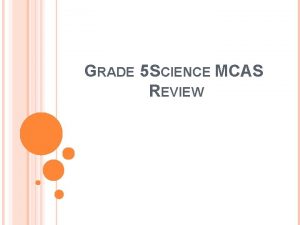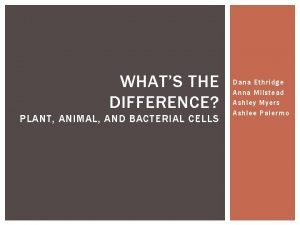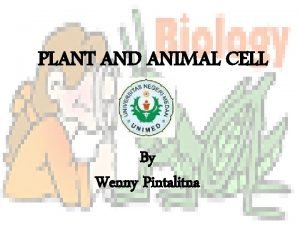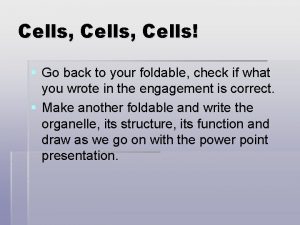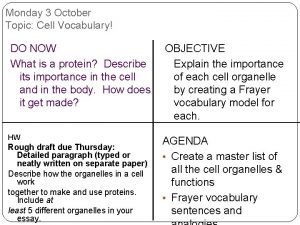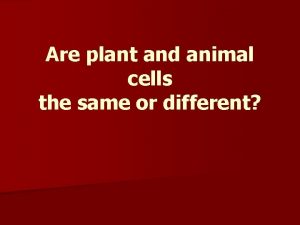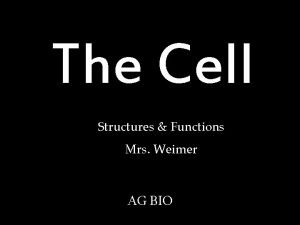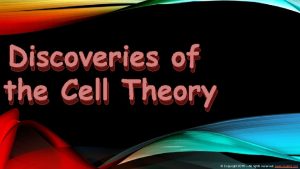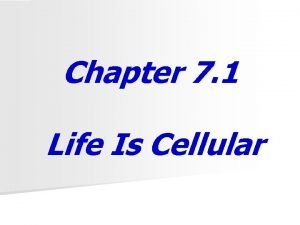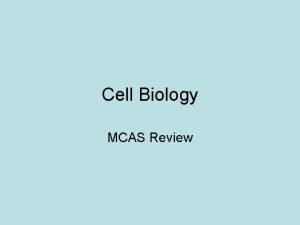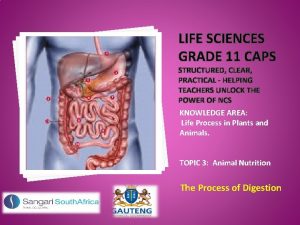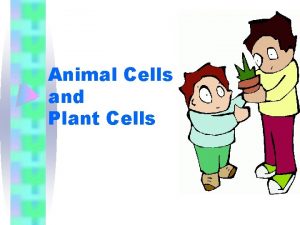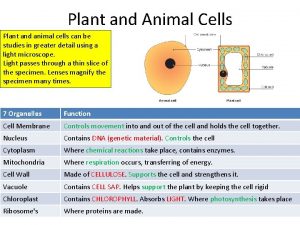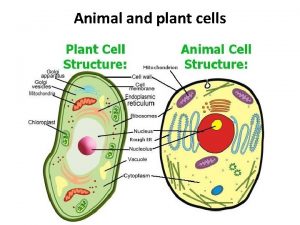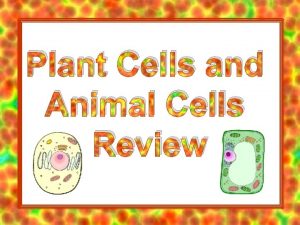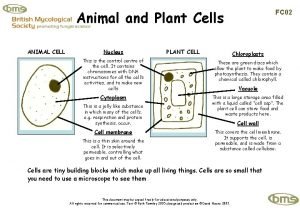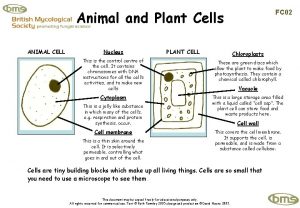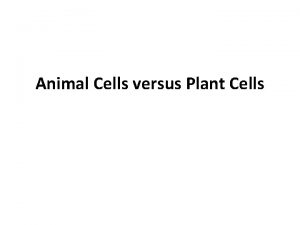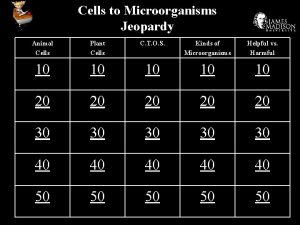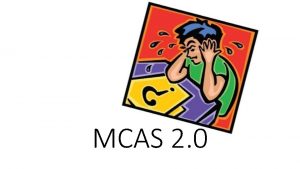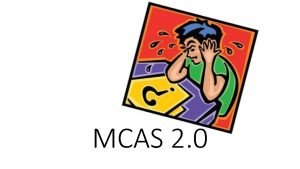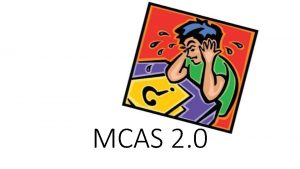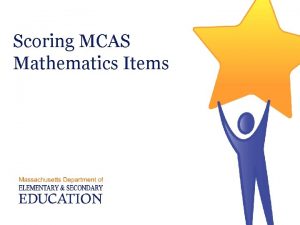MCAS Life Science Review Cells Animal Plant http





























- Slides: 29

MCAS Life Science Review

Cells Animal Plant http: //www. youtube. com/watch? v=-zaf. JKb. MPA 8

Cells: Similarities Plant Animal Cell Membrane Cytoplasm Nucleus Mitochondria Organelles: Small , membrane enclosed, parts of the cell that do a specific job.

Cells: Differences Animal Plant Cell Wall Vacuole Chloroplasts Organelles: Small , membrane enclosed, parts of the cell that do a specific job.

Cells Questions: 1. What type of cells are these? 2. How can you tell? 3. What is the importance of the green organelles?

Types of Cells There are many different types of cells. Different cells can look very different. Red Blood Cells Neurons: Brain Cells Cardiac Muscle Cells Their shape and size help them do their specific job.

Body Organization

Human Body Systems

DNA, Genes, and Heredity

DNA, Genes, and Heredity

DNA, Genes, and Heredity This is a Karyotype. It shows the 23 PAIRS of chromosomes in one human skin cell. These chromosomes contain DNA. 23 individual chromosomes came from the mother and 23 of them came from the father. Can you tell if this DNA came from a boy or a Girl? It’s a BOY! XY is a boy and XX is a girl

Punnett Square for Gender

Punnett Squares

Genotype and Phenotype Genotype: the genes passed down from the parents Phenotype: the trait that you can see

Punnett Squares What percentage of the offspring will have yellow Seeds? Green Seeds?

http: //facultylounge. whfreeman. com/files/ima ges/figure_25_04. preview. jpg

Sexual vs. Asexual Reproduction Sexual Reproduction: – 2 Parents – Offspring are NOT identical to the parents • More genetic diversity Asexual Reproduction: – 1 Parents – Offspring are identical to the parent

Sexual vs. Asexual Reproduction Question: Which type of reproduction will lead to greater genetic diversity in a population?

Food Chain • All organisms in an ecosystem • Arrows go in the direction of Energy flow • Producers (Plants) convert solar energy into food for all other organisms to use

Food Chain: Trophic Levels Feeder Level Plants PRODUCE their own food Primary (First) Consumers Eat ONLY Plants - Herbivores Secondary Consumers Eat Primary Consumers Tertiary Consumers Eat Secondary Consumers Top Predators - Carnivores

Food Web • The interactions of all organisms in an ecosystem • Arrows go in the direction of Energy flow • Producers (Plants) convert solar energy into food for all other organisms to use http: //www. youtube. com/watch? v=Ed. Kh. QVHc 3 Ao

Symbiosis Relationships between Organisms Mutualism Parasitism Commensalism Predator -Prey

Evolution By Natural Selection Natural selection is simply the logical result of four features of living systems: variation - individuals in a population vary from one another inheritance - parents pass on their traits to their offspring genetically selection - some variants reproduce more than others time - successful variations accumulate over many generations http: //www. nhm. ac. uk/natureonline/evolution/what-is-evolution/naturalselection-game/the-evolution-experience. html http: //www. techapps. net/interactives/pepper Moths. swf

Darwin’s Evidence for Evolution

Evolution of Bacteria



Classification

Classification
 Comparing animal and plant cells venn diagram
Comparing animal and plant cells venn diagram Grade 5 science mcas
Grade 5 science mcas Whats the difference between animal and plant cells
Whats the difference between animal and plant cells Animal rights vs animal welfare venn diagram
Animal rights vs animal welfare venn diagram What cell type
What cell type Structure of a animal cell
Structure of a animal cell Perixomes
Perixomes Whats the difference between plant and animal cells
Whats the difference between plant and animal cells Group of multicellular oxygen producers
Group of multicellular oxygen producers Plant cells
Plant cells Plant vs animal cells
Plant vs animal cells Whats the difference between plant and animal cells
Whats the difference between plant and animal cells Plant and animal cells
Plant and animal cells Difference between bacteria and plant cell
Difference between bacteria and plant cell Cell theory contributors
Cell theory contributors Diffrences between plant and animal cells
Diffrences between plant and animal cells Flexible covering of an animal cell
Flexible covering of an animal cell Biology mcas review
Biology mcas review Life science grade 11 animal nutrition
Life science grade 11 animal nutrition Waters view with open mouth
Waters view with open mouth Tubular lumen
Tubular lumen Thyroid gland
Thyroid gland Gametic cells vs somatic cells
Gametic cells vs somatic cells Why dna is more stable than rna
Why dna is more stable than rna Chlorocruorin
Chlorocruorin Eukaryota
Eukaryota Prokaryotic cells vs eukaryotic cells venn diagram
Prokaryotic cells vs eukaryotic cells venn diagram Organelle trail
Organelle trail Masses of cells form and steal nutrients from healthy cells
Masses of cells form and steal nutrients from healthy cells Pseudostratified vs simple columnar
Pseudostratified vs simple columnar

